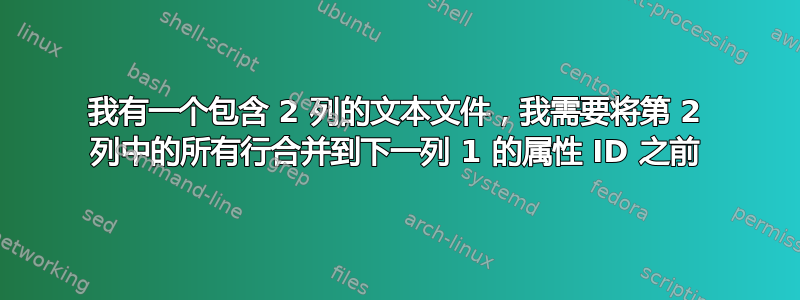
只处理过非常简单的文本到 csv 数据格式。我正在为一个地图项目处理一个包含 14900 行的文本文件。我尝试使用制表符等进行分隔,但无法在第一列中为单个属性 ID 获取单个文本字符串。每个属性 ID 应该有一个文本字符串属性,但每个属性 ID 都有多个分隔行(如屏幕截图所示)。我希望得到一些关于为每个属性 ID 创建单个文本字符串的指导。txt 文档称为解释性说明,位于 ASRIS CSIRO 网站上,如果有任何帮助的话。
https://www.asris.csiro.au/downloads/Atlas/soilAtlas2M.zip.或者看一下我的意思的截图。
非常感谢
目标数据需要看起来像这样,描述可能是一个 200 个字符长的文本字符串,没有回车符或换行符,这并不好看,但要将其导入到我的地图中,我不能为一个描述设置多个换行符
| 附件 ID | 描述 |
|---|---|
| 第一的 | 排 |
| 第二 | 排 |
答案1
这可以使用 Windows Excel 2010+ 和 Excel 365(Windows 或 Mac)中的 Power Query 来实现
使用 Power Query
使用第一行的代码作为如何将文本文件读入 Power Query 的示例
- 就我而言,我将提取的文件存储在桌面上
`数据 => 获取并转换 => 来自文本/CSV
当 PQ 编辑器打开时:
Home => Advanced Editor记下第 2 行中的路径
将下面的 M 代码粘贴到您所看到的位置
将第 2 行的路径改回最初生成的路径。
阅读评论并探索
Applied Steps以了解算法
let
//Use non-existent character for delimiter to keep from splitting anything
Source = Csv.Document(File.Contents("C:\Users\ron\Desktop\explanatoryNotes.txt"),
[Delimiter=Character.FromNumber(1), Columns=1, Encoding=1252, QuoteStyle=QuoteStyle.None]),
#"Removed Blank Rows" = Table.SelectRows(Source, each not List.IsEmpty(List.RemoveMatchingItems(Record.FieldValues(_), {"", null}))),
#"Renamed Columns" = Table.RenameColumns(#"Removed Blank Rows",{{"Column1", "Explanatory Notes"}}),
#"Removed Top Rows" = Table.Skip(#"Renamed Columns",1),
#"Added Custom" = Table.AddColumn(#"Removed Top Rows", "Custom", each
//replace first space with a SOH
let
noteList = Text.ToList([Explanatory Notes]),
firstSpace = List.PositionOf(noteList," ",Occurrence.First),
replWithPlaceHolder = List.ReplaceRange(noteList,firstSpace,1,{Character.FromNumber(1)}),
theString = Text.Combine(replWithPlaceHolder)
in
theString),
//Remove original column, then split on that first SOH
//should leave a space in first column which can be replaced with null
#"Removed Columns" = Table.RemoveColumns(#"Added Custom",{"Explanatory Notes"}),
#"Split Column by Delimiter" = Table.SplitColumn(#"Removed Columns", "Custom", Splitter.SplitTextByEachDelimiter({Character.FromNumber(1)},
QuoteStyle.Csv, false), {"Attribute ID","Explanatory Note"}),
//Trim any leading (and trailing) spaces
#"Trimmed Text" = Table.TransformColumns(#"Split Column by Delimiter",{
{"Attribute ID", Text.Trim, type text}, {"Explanatory Note", Text.Trim, type text}}),
//Replace empty cells in Attribute Column with Nulls to enable fill down
addNulls = Table.TransformColumns(#"Trimmed Text",{{"Attribute ID", each if Text.Length(_)=0 then null else _, type text}}),
#"Filled Down" = Table.FillDown(addNulls,{"Attribute ID", "Explanatory Note"}),
//Group by ID (with groupkind.local in case there are separate identical groups)
// and concatenate the Note lines
#"Grouped Rows" = Table.Group(#"Filled Down", {"Attribute ID"}, {
{"Explanatory Notes", each Text.Combine([Explanatory Note]," "), type text}})
in
#"Grouped Rows"
答案2
只是为了提供替代解决方案,这里介绍如何使用 Linux shell 和 提取此文cat tr awk本sed:
准备索引文件:
cat explanatoryNotes.txt|grep -v ^' '|awk '{print $1}' > indexes
从文本文件中删除所有新行:
cat explanatoryNotes.txt|tr -d '\n' > explanatoryNotes.txt-no_newlines
搜索并用索引+换行符替换所有索引:
for i in `cat indexes`;do sed -i 's/'"\\${i} "'/'"\\${nl}${i} "'/g' explanatoryNotes.txt-no_newlines;done
此文本操作期望索引字符组仅出现在行首(而不是文本内)才能正常工作。



